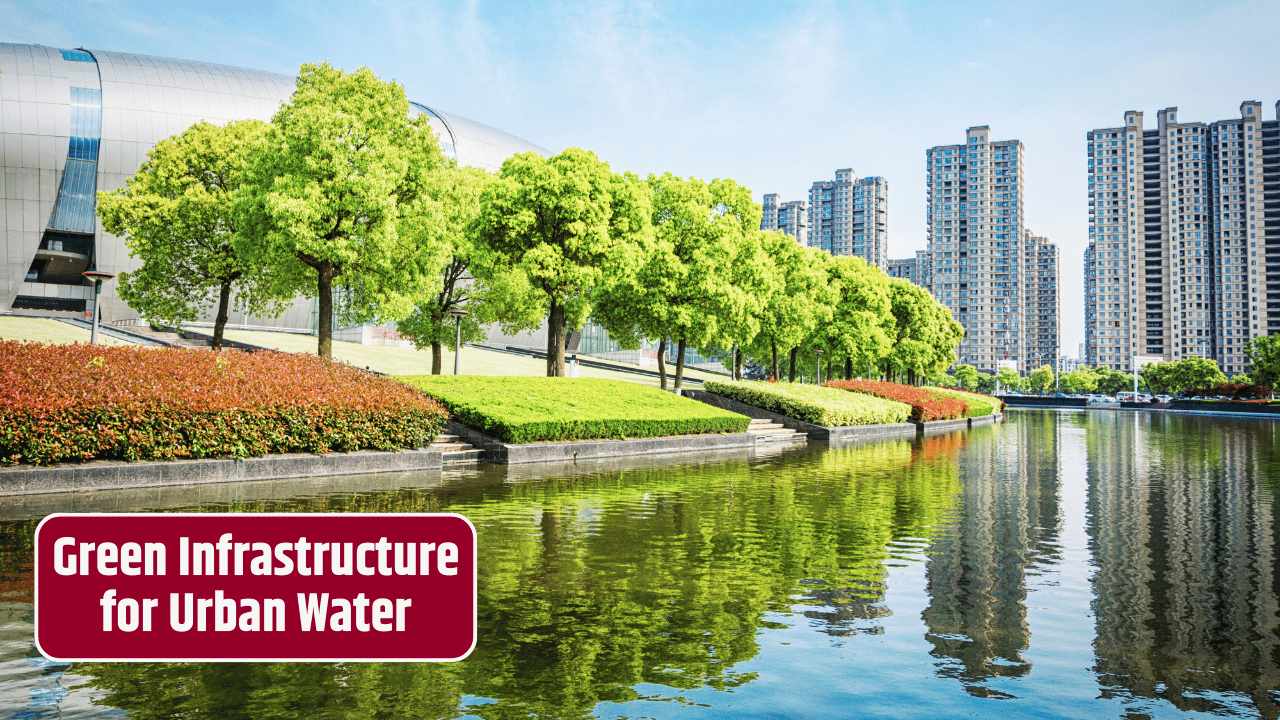As urban populations expand and climate change intensifies, managing water in cities has become increasingly complex. One of the most promising solutions lies in green infrastructure — a nature-based approach that complements traditional (or “gray”) systems like pipes and treatment plants. Green infrastructure helps cities absorb, clean, and reuse water more sustainably, reducing flood risk and improving water quality while enhancing urban livability.
Table of Contents
What Is Green Infrastructure?
Green infrastructure refers to systems and practices that use or mimic natural processes to manage stormwater and improve water quality. Unlike traditional gray infrastructure, which typically moves water away from cities as quickly as possible, green infrastructure captures and treats water at its source.
Common examples include:
- Rain gardens
- Green roofs
- Permeable pavements
- Urban wetlands
- Bioswales
- Tree trenches
These solutions not only manage water but also offer additional benefits like cooling urban heat, improving air quality, and creating green spaces for communities.
How Green Infrastructure Supports Urban Water Management
Green infrastructure plays several critical roles in enhancing how cities manage water:
1. Reduces Flood Risk
Urban areas with large amounts of impervious surfaces (roads, parking lots, rooftops) struggle with rapid runoff during storms. Green infrastructure slows and absorbs rainfall, reducing the burden on drainage systems and preventing flash floods.
2. Improves Water Quality
Stormwater runoff often carries pollutants — oil, metals, fertilizers — into water bodies. Green systems naturally filter this runoff through soil and vegetation, removing contaminants before they reach rivers, lakes, or groundwater.
3. Recharges Groundwater
By allowing rain to soak into the ground, green infrastructure helps replenish aquifers, which are often overdrawn in urban settings.
4. Enhances Resilience to Climate Change
Green infrastructure provides flexibility and adaptability. During heavy rain, it absorbs excess water; during drought, it helps retain moisture in the landscape. This makes cities more resilient to the growing unpredictability of climate-driven weather events.
Comparing Green and Gray Infrastructure
| Feature | Green Infrastructure | Gray Infrastructure |
|---|---|---|
| Approach | Mimics natural processes | Engineered systems |
| Flood Management | Absorbs and slows runoff | Channels and expels runoff |
| Water Quality | Naturally filters pollutants | Often requires treatment facilities |
| Environmental Benefits | Improves biodiversity, air quality | Limited additional benefits |
| Cost | Lower long-term maintenance, scalable | Higher capital costs and maintenance |
| Climate Adaptability | High | Moderate to low |
Implementation Challenges
Despite its benefits, green infrastructure isn’t without obstacles:
- Space constraints in dense cities
- High upfront planning costs and longer timelines
- Lack of technical knowledge or standards
- Uncertain performance metrics compared to traditional systems
However, many of these barriers can be overcome through strong policy support, public-private collaboration, and investment in pilot programs to demonstrate success.
Cities Leading the Way
Several cities have become pioneers in green infrastructure:
- Philadelphia’s Green City, Clean Waters program invests over $2 billion in stormwater solutions.
- Portland, Oregon has integrated green streets and bioswales throughout the city.
- New York City promotes green roofs and permeable pavements to manage runoff.
These cities have shown that green infrastructure not only supports water management but also adds social, environmental, and economic value.
Green infrastructure is more than a water management tool — it’s a comprehensive strategy for building climate-resilient, livable cities. By investing in nature-based solutions, urban planners and policymakers can reduce costs, improve environmental outcomes, and create healthier communities. As more cities embrace this approach, green infrastructure will play an increasingly vital role in shaping the future of urban water systems.
FAQs
What is the difference between green and gray infrastructure?
Green infrastructure uses natural processes to manage water, while gray infrastructure relies on engineered systems like sewers and treatment plants.
Can green infrastructure prevent flooding?
Yes, it reduces surface runoff by absorbing rain where it falls, helping prevent urban flooding during storms.
Is green infrastructure expensive to implement?
Initial costs can vary, but long-term maintenance is often lower than traditional infrastructure, and the benefits outweigh the costs over time.
Do green roofs really help manage water?
Absolutely. Green roofs absorb rainwater, reduce runoff, and insulate buildings, contributing to both stormwater management and energy efficiency.
How can communities support green infrastructure?
Residents can install rain gardens, advocate for green policies, and participate in community planning processes that prioritize sustainability.














